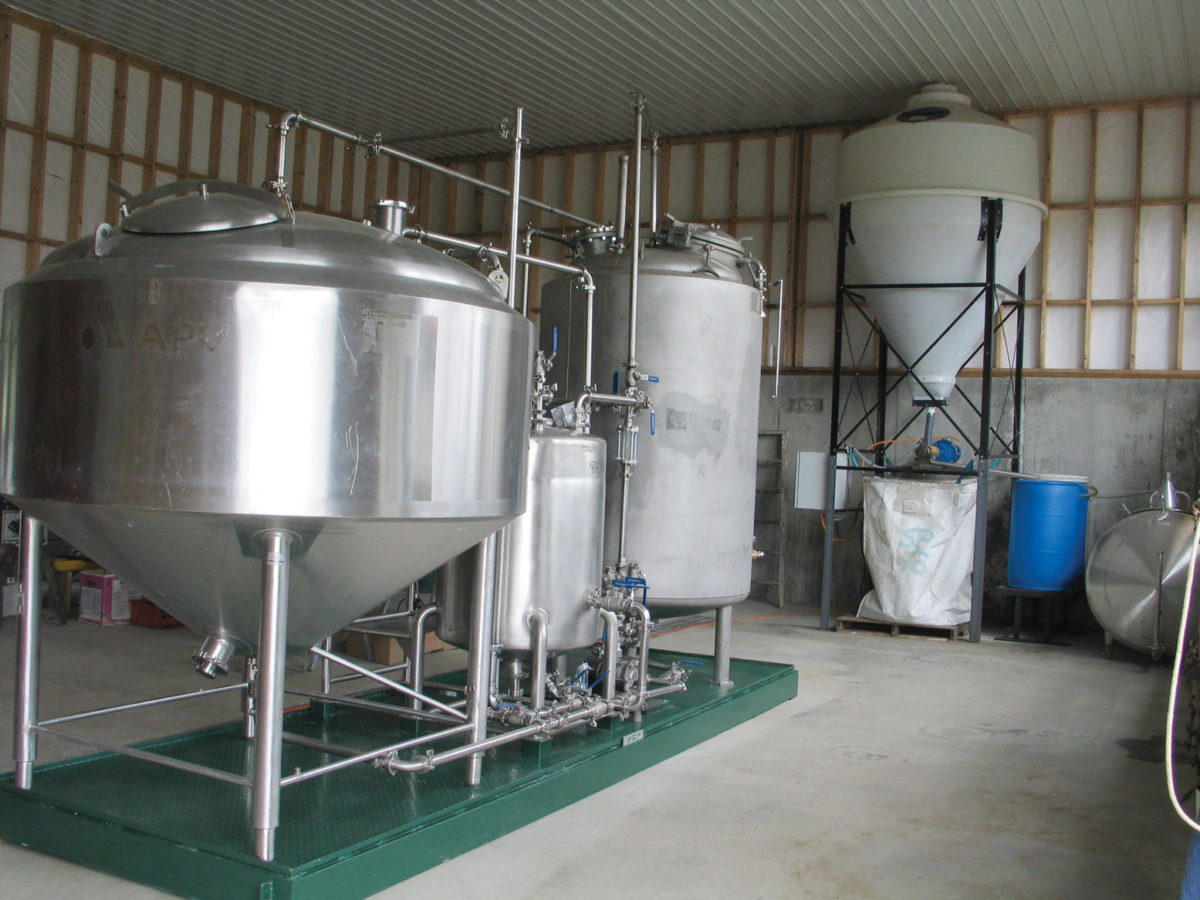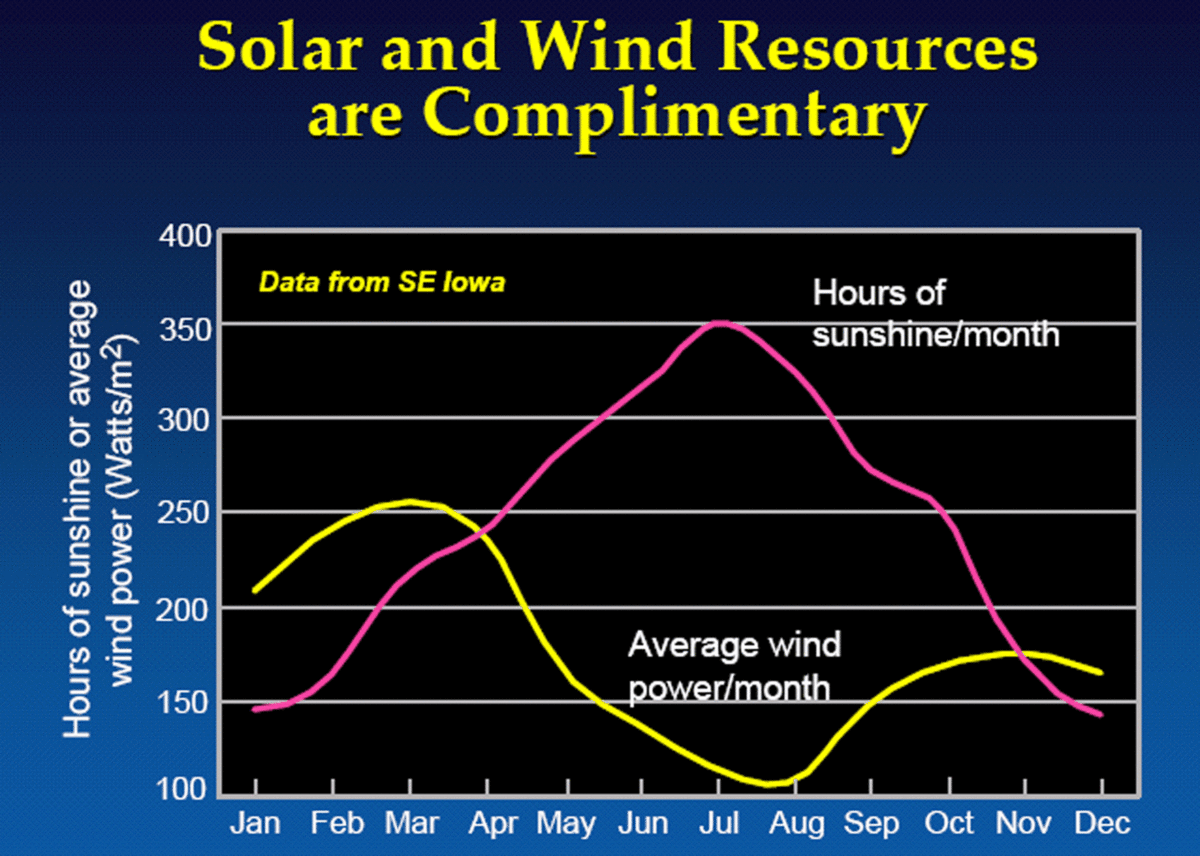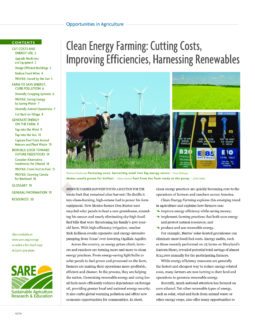Biomass crops, converted vegetable oil or animal manure, windmills and solar panels – across America, farmers are increasingly exploring a range of energy technologies to “grow” energy on the farm. Some produce primarily for their own use, while others generate enough energy to sell back to the grid or in biofuels markets.
Many farmers combine different renewable energy sources to develop highly self-sufficient systems.
- In Minnesota, Steven Schwen uses both solar and biomass to heat his greenhouse.
- In Vermont, John Williamson constructed a passive solar facility where he will produce biodiesel from locally grown canola, mustard and flax.
- In Missouri, Dan West is developing a prototype solar concentrator to help power his waste-fruit ethanol still.

Tap into the Wind
In recent years, government incentives and tax credits and consumer demand for green energy have spurred huge growth in wind energy generation. Modern turbines are now powering individual farms. And across the “wind states” – those located in the Great Plains, Midwest and West – the tall, white towers of mass-scale wind farms have become common sights.
Jess Alger, a fourth-generation Montana rancher, used do-it-yourself installation and federal and state incentives to make wind power economical. In 2003, Alger installed a 100-foot tower that now provides electricity for his home and 1,200-acre ranch. In total, the system cost $36,850 less than normal because he did not pay a dealer and prepared the site himself. He also obtained funding from USDA and the National Center for Appropriate Technology (NCAT). Today, Alger produces electricity in excess of his needs.
Wind is not limited to just the West or Midwest. Leonardo Busciglio bought and installed a decommissioned wind tower from California for his New York farm. The SARE grant recipient knew he had a wind tunnel in the valley near his house, and although he paid more to ship the 10 kW turbine than buy it, he estimates a payback of only five years, thanks to his reduced electric bill.

Choosing an appropriate small-scale system depends on a farmer’s needs and site. Smaller turbines requiring less wind can run a water pump; bigger turbines can provide the farm’s entire electrical needs. While the amount of wind needed varies, a rule of thumb is that a location should have a minimum of Class 2 winds. If wind speeds are too low, due either to climate or not enough tower height, the system will not produce enough energy to be economically viable.
Other factors to consider are zoning restrictions, land area, and availability of state tax credits or incentives. Each site’s conditions must be evaluated individually. And the financial outlay can be high. For a 10 kW turbine, the system can cost $40,000–$60,000 installed; smaller, appliance-specific windmills run about $15,000. However, many states, especially those generously endowed with wind, offer tax credits, grants and other incentives that can make wind power worth a farmer’s while.
Because operating a wind farm requires a substantial outlay of funds and research time, some farmers are forming cooperatives. Large-scale wind farmers have the added consideration of having to deal with utilities, which can be daunting. The ease of hooking up to the grid varies from state to state, and is dependent on such variables as the type of utility, local regulations and net metering laws (For more information, see Working with Rural Utilities: What’s the Buzz?).
Tap into the Sun
When Brookfield Farm began building a new barn in 2003, community members thought its sun-exposed roof would be a good place to generate solar power. Two years later, Brookfield, located in Amherst, Mass., installed a 3.8 kW solar electric system that today generates enough electricity to power walk-in coolers, greenhouse fans, the office computers and lights for its 520-member community-supported farm operation. The panels supply anywhere from 20–50 percent of the farm’s electricity.
To get the project off the ground, the farm had to harness financing and technical support, as well as the sun’s rays. It approached the Center for Ecological Technology (CET), which, with help from a SARE grant, connected the farm with engineering, electrical and solar energy consultants. To pay for the entire system, Brookfield landed a state energy grant and also received $15,000 in donations from its members.
“It’s great to see the meter spinning fast on sunny days,” said Jeff Tober, Brookfield assistant farm manager, who often shows the system to other farmers and business owners. “We want to use as little as possible from the grid.”
Brookfield Farm is just one example of how the sun can power everything from water pumps to lighting systems, from electric fencing to greenhouse heating. With the high cost of running transmission lines to locations more than a half mile from a traditional power source, solar can make economic sense. Grants and tax incentives offered by some states can also make a big difference. And the technology is improving: Today’s photovoltaic (PV) panels are easy to install and maintain, long-lived (up to about 25 years) and come with extended warranties. That said, the price of solar panels can fluctuate widely, depending on availability and other market forces.
Sunny rooftops or other locations with clear access to the sun and a south-facing roof are the best place to site a solar energy system, although east- or west-facing roofs might work. If a rooftop can’t be used, solar panels can be placed on the ground, either on a fixed or tracking mount that follows the sun during the day.
Passive solar construction – intentionally siting and designing a building to optimize heating and cooling – can reap maximum energy gain with minimal investment. For warming, a passive solar building can include south-facing windows, heat-absorbing tile, concrete flooring and other “thermal mass” material. For keeping buildings cool, well-sited trees, window coverings and awnings can effectively block the sun.
Solar has been especially useful to ranchers and dairy farmers for powering water pumps in remote pastures. With help from a SARE-funded managed grazing program, Richard Bossard, a dairy farmer in Steuben County, N.Y., installed such a system. Today, his cows no longer hover around one well, but drink from five water stations across 100 acres of pasture.
